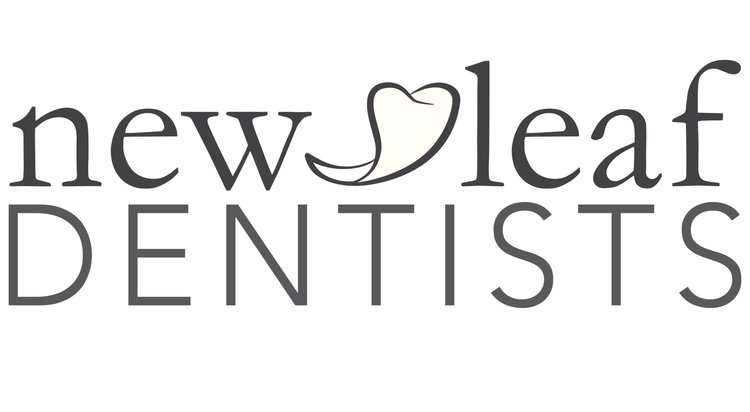For this week’s blog post, we are taking a break from Dr Vergara with a guest writer - one of our beautiful female dentists here at New Leaf Dentists, Dr. Erna Linsao-Mendoza DMD.
During the time of COVID-19 lockdown, everyone has been out of whack with their life routines, most likely eating more than usual, of food that we probably don’t eat too much of when we are our usual selves (Haha!). Therefore, it might be time to talk about how this may be impacting our oral health, such as making us more susceptible to tooth decay….
Let’s see what Dr Erna has to say about this!
Happy Reading!
~ Pam
What is tooth decay?
Tooth decay is a chemical burn to the tooth. It develops when the tooth is constantly exposed to acid which progressively dissolves the crystal structure of the tooth. It presents in many forms depending on the stage at which we detect it.
The earliest stage of tooth decay is a white spot lesion where the acid has started to eat away the shallow layer of the tooth. As the decay progresses, you may notice a brown or black spot as the decay spreads into the deeper layers. During these initial stages, you may not be aware that you have decay as these do not normally cause you any symptom.
Ultimately, the most obvious presentation of tooth decay is a cavity wherein the acid has completely dissolved the layers and has formed a hole. At this stage, you may experience sensitivity when you eat ice cream or drink very cold drinks. You may also notice that food gets stuck in the cavity that can occasionally cause a foul taste or smell.
What are the factors that cause tooth decay?
1. Plaque: These are the bugs and germs that naturally sit on your teeth. These bugs eat the sugar in your mouth and produce acid which dissolves the teeth. These bugs multiply over time and you may notice a soft cheese-like layer on your teeth when you skip toothbrushing for a day.
2. Diet:
Sugar: The sugar from the food and drinks we consume feeds the bugs that produce acid which dissolves the teeth. The worst ones are the sticky ones that stay on the teeth for extended period of time. Examples: toffee, caramel, chocolates
Acidic foods and drinks: This is the double whammy in my opinion. Acidic foods and drinks already contain the acid which dissolves the teeth. To make it worse, most acidic drinks also contain high amounts of sugar that feeds the bugs to further ramp up acid production for dissolving teeth. Examples: Soda, energy drinks, bottled iced coffees, etc.
3. Low saliva amount: Saliva helps in washing away the bugs and sugar from your teeth. It is also a good buffer system that helps neutralise the acid. It also contains minerals that help protect the teeth and sometimes even reverses early tooth decay. Many people have underlying medical conditions and/or taking medications that cause dry mouth – in which case, their mouths do not have a natural cleansing ability to protect their teeth.
4. Lack of Fluoride: Fluoride helps in strengthening the crystal structure of the teeth making them more resistant to acid attack. Hence, if you are not exposed to fluoridated water or toothpaste, your teeth do not benefit from the strengthening effects of fluoride making them more susceptible to developing decay.
5. Genetics. Life is not fair and we are just born the way we are. Some people have weaker teeth than others.
I already have tooth decay! What will happen if I leave it untreated?
Leaving it untreated risks the progression of the decay into the nerve which will present as pain to not just cold drinks but also to hot. You may also experience pain when you chew on the tooth while you eat. When this happens, the treatment you will require is usually more costly (watch this blog for more information about Root Canal Therapy). With tooth decay, prevention, early detection and intervention is critical.
What can I do to prevent tooth decay?
Do you know that there is one thing you can do that can protect your teeth from most of the factors I mentioned above?
Answer: Maintaining good oral hygiene
1. Clean in between your teeth with either a dental floss or interdental brushes once every night before toothbrushing. This is important to ensure that you clean the areas where the toothbrush does not reach. These are also the areas where cavities usually develop.
2. Brush ALL the surfaces of your teeth twice a day – MORNING and NIGHT – for at least 3 minutes each time. You can set a timer on your phone.
3. Use a fluoride toothpaste.
Maintaining good oral hygiene ensures that we keep the levels of acid-producing bugs to a minimum, we wash away the acid and sugar from our teeth and that we protect our teeth with fluoride making them more-resistant to decay.
What else can we do?
Aside from maintaining good oral hygiene, below are additional tips to being decay-free:
Limit having sugary food and drinks with the main meals ie Breakfast, Lunch and Dinner to reduce the exposure time to acid. In other words, avoid grazing on chocolates and lollies all day long and yes, you can eat a whole bar of chocolate as long as you do so quickly!
Rinse your mouth with tap water (preferably fluoridated) after having sugary food and drinks
Substitute sugary snacks with cheese, crackers, fruits, nuts and grains
Chew a sugar-free gum to help stimulate saliva production. Xylitol-containing gums have also been shown to help stop tooth decay
Visit your dentist regularly for a 6-monthly check-up and clean. X-rays are routinely done to check for decay in between your teeth and under your existing fillings. It is best to detect the decay while they are at the early stages – less costly too!
See you in the Erina clinic and I can show you my technique of brushing and flossing. Maybe you’ll get some freebies too!
Sincerely,
Dr Erna Linsao-Mendoza DMD
Erina, Central Coast Dentist
Dr Erna Linsao DMD
Associate Dentist
See her in Erina on Thursdays and Saturdays


